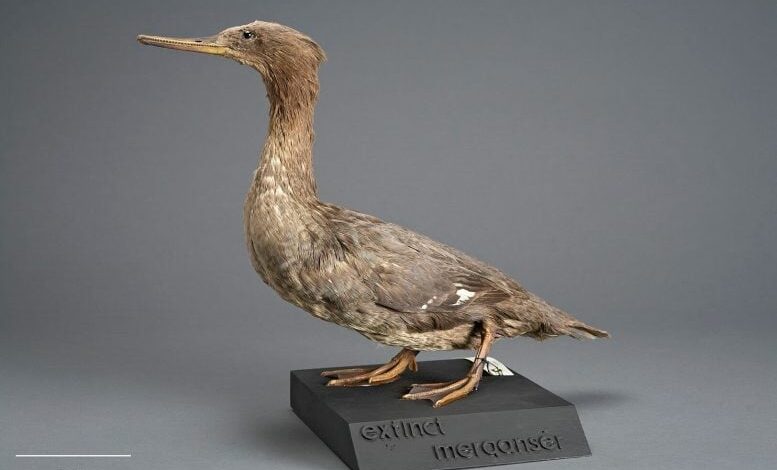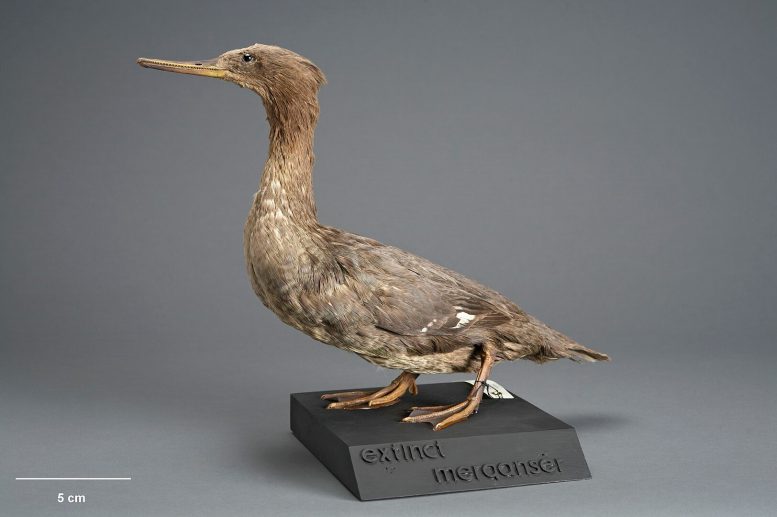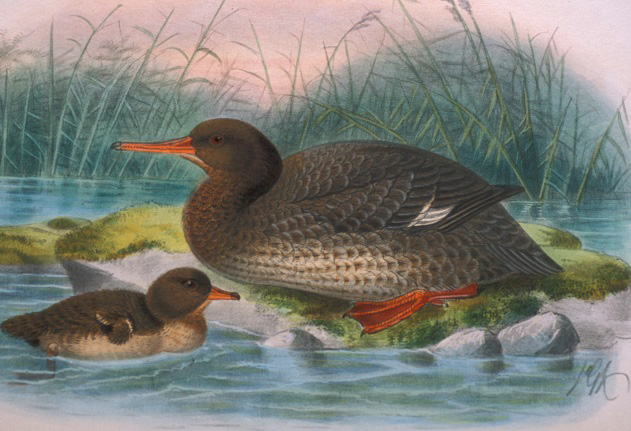Ancient DNA Unravels the Origins of a Mysterious Lineage of Mergansers


A University of Otago-led study has revealed that mergansers, a type of fish-eating duck usually found in the Northern Hemisphere, arrived in New Zealand from the Northern Hemisphere at least seven million years ago, following a different migration path than previously assumed. This discovery, achieved through cutting-edge ancient DNA techniques, challenges existing theories about the origins of New Zealand’s bird species, suggesting more global connections than previously recognized. Historical skin of Auckland Island merganser from Museum of New Zealand Te Papa Tongarewa. Credit: University of Otago
A new study has discovered that mergansers arrived in New Zealand from the Northern Hemisphere over seven million years ago, highlighting a more cosmopolitan origin for New Zealand’s bird species than previously believed.
A recent study led by the University of Otago has revealed the origins of an enigmatic lineage of mergansers in Aotearoa New Zealand. Mergansers are riverine and coastal fish-eating ducks predominantly found in the Northern Hemisphere, however there are a few rare species from the Southern Hemisphere.
They are the critically endangered Brazilian merganser (Mergus octosetaceus) and at least two extinct species known to be from New Zealand’s Auckland and Chatham Islands (Mergus australis and Mergus milleneri, respectively). The study’s lead author Associate Professor Nic Rawlence, Director of the Otago Palaeogenetics Laboratory, says the evolutionary history of mergansers in New Zealand has been shrouded in mystery since the extinction of the Auckland Island merganser, the last surviving population, in 1902.
“There is not even a deep-time fossil record of these birds in the Southern Hemisphere,” Associate Professor Rawlence says.
Until now, the evolutionary relationship between the Southern Hemisphere mergansers, when their ancestors arrived in the region, and from where, have been unknown. The study’s findings, published in the Zoological Journal of the Linnean Society, show mergansers arrived in the New Zealand region at least seven million years ago from the Northern Hemisphere, in a separate colonization event to that which led to the Brazilian merganser.

An artistic reconstruction of the Auckland Island merganser. Credit: Artistic reconstruction by J. G. Keulemans from Bullers Birds of New Zealand (1888)
Associate Professor Rawlence says this is a significant discovery.
“It shows an increasing number of New Zealand’s birds don’t hail from Australia, with more cosmopolitan links with Madagascar, Africa, South America, and now the Northern Hemisphere. The grandfather of New Zealand paleontology, Sir Charles Fleming, hypothesized this back in the 1960s, long before the advent of genetics, and it’s only now that genetics and paleontology are catching up.”
Genetic Research and Future Prospects
The collaborative research, which also involved scientists from Manaaki Whenua Landcare Research, the Museum of New Zealand Te Papa Tongarewa, and the University of Adelaide, used state-of-the-art ancient DNA techniques to extract the DNA from historical specimens of the extinct Auckland Island merganser and the critically endangered Brazilian merganser and “went fishing for their DNA”.
“We sequenced the mitochondrial genome of these species and reconstructed the family tree of mergansers and when their ancestors arrived in the region,” he says. “Further research by our lab is hoping to determine when and how mergansers diversified across the New Zealand region, including on the mainland, and Auckland and Chatham Islands.”
Associate Professor Rawlence believes future palaeontological and ancient DNA research in the Southern Hemisphere will unearth more unexpected lineages.
Reference: “Ancient mitogenomes reveal evidence for the Late Miocene dispersal of mergansers to the Southern Hemisphere” by Nicolas J Rawlence, Alexander J F Verry, Theresa L Cole, Lara D Shepherd, Alan J D Tennyson, Murray Williams, Jamie R Wood and Kieren J Mitchell, 07 May 2024, Zoological Journal of the Linnean Society.
DOI: 10.1093/zoolinnean/zlae040



